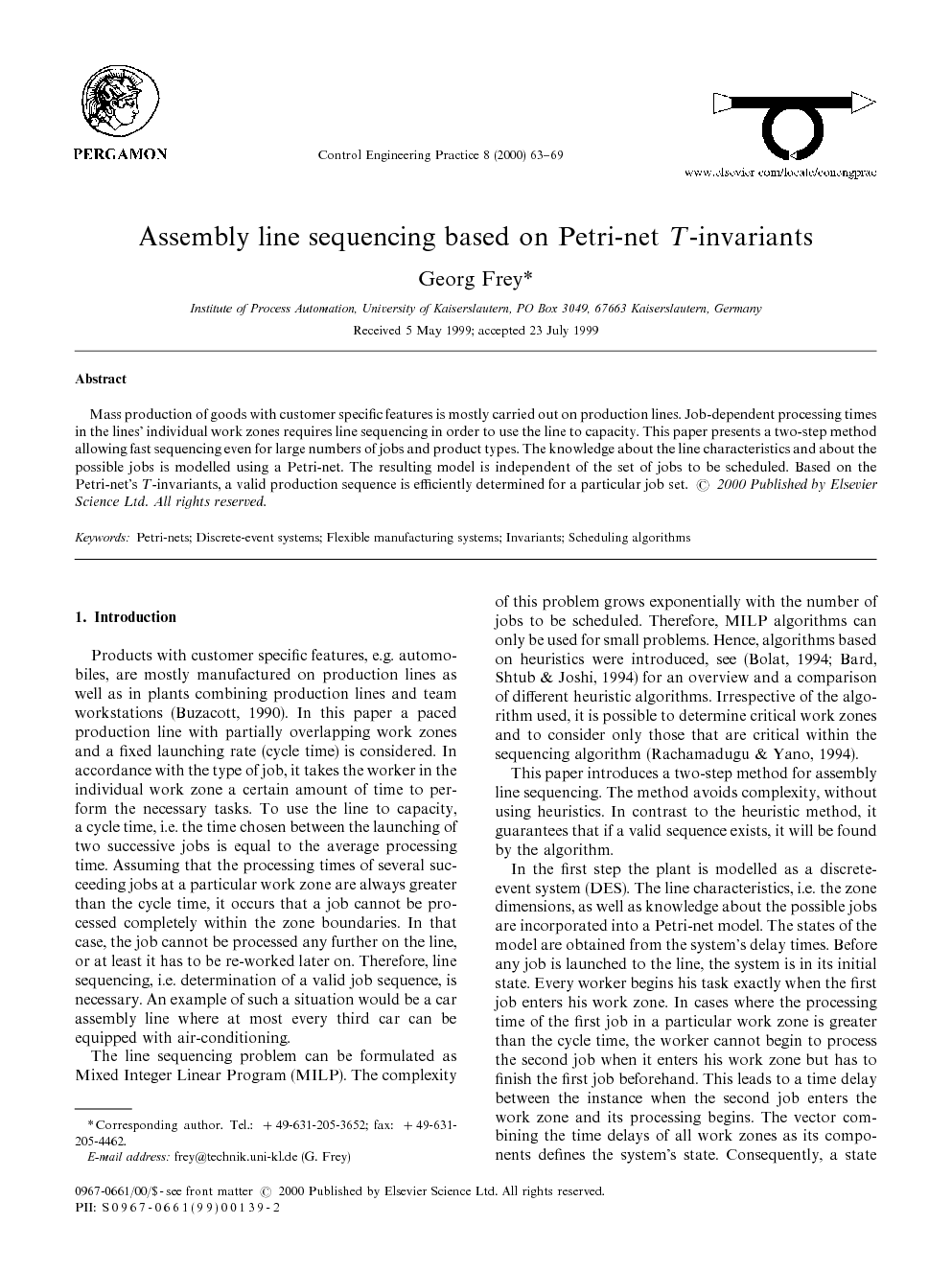ترجمه فارسی عنوان مقاله
توالی خط مونتاژ بر اساس ویژگیهای T شبکه پتری
عنوان انگلیسی
Assembly line sequencing based on Petri-net T-invariants
| کد مقاله | سال انتشار | تعداد صفحات مقاله انگلیسی |
|---|---|---|
| 15212 | 2000 | 7 صفحه PDF |
منبع

Publisher : Elsevier - Science Direct (الزویر - ساینس دایرکت)
Journal : Control Engineering Practice, Volume 8, Issue 1, January 2000, Pages 63–69
ترجمه کلمات کلیدی
- پتری - شبکه - سیستم های رویداد گسسته - سیستم های تولید انعطاف پذیر - ثابت - الگوریتم های زمانبندی
کلمات کلیدی انگلیسی
Petri-nets,Discrete-event systems,Flexible manufacturing systems,Invariants,Scheduling algorithms

